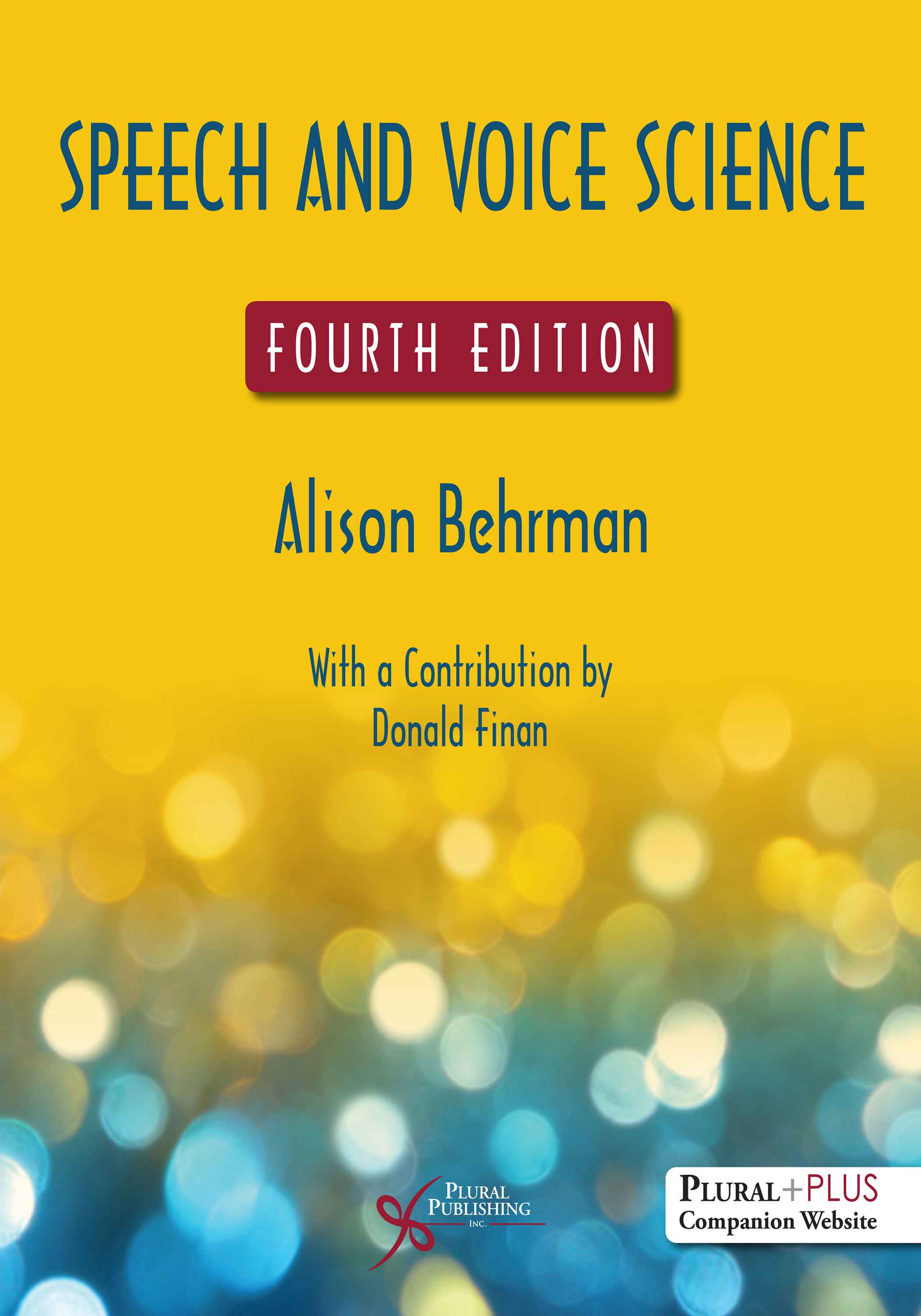
Speech and Voice Science
Fourth Edition
Alison Behrman
Details: 517 pages, 2-Color, Softcover, 8.5" x 11"
ISBN13: 978-1-63550-322-7
© 2023 | Available
For Instructors
Purchase
Speech and Voice Science, Fourth Edition is the only textbook to provide comprehensive and detailed information on both voice source and vocal tract contributions to speech production. In addition, it is the only textbook to address dialectical and nonnative language differences in vowel and consonant production, bias in perception of speaker identity, and prosody (suprasegmental features) in detail. With the new edition, clinical application is integrated throughout the text.
Due to its highly readable writing style being user-friendly for all levels of students, instructors report using this book for a wide variety of courses, including undergraduate and graduate courses in acoustic phonetics, speech science, instrumentation, and voice disorders. Heavily revised and updated, this fourth edition offers multiple new resources for instructors and students to enhance classroom learning and active student participation. At the same time, this text provides flexibility to allow instructors to construct a classroom learning experience that best suits their course objectives.
Speech and Voice Science now has an accompanying workbook for students by Alison Behrman and Donald Finan!
New to the Fourth Edition
- Sixteen new illustrations and nineteen revised illustrations, many now in color
- New coverage of topics related to diversity, including:
- Dialectical and nonnative language differences in vowel and consonant production and what makes all of us have an “accent” (Chapter 7—Vowels and Chapter 8—Consonants)
- How suprasegmental features are shaped by dialect and accent (Chapter 9—Prosody)
- Perception of speaker identity, including race/ethnicity, gender, and accent (Chapter 11– Speech Perception)
- Increased focus on clinical application throughout each chapter, including three new sections
- Updated Chapter 4 (Breathing) includes enhanced discussion of speech breathing and new accompanying illustrations.
- Updated Chapter 10 (Theories of Speech Production) now includes the DIVA Model, motor learning theory, and clinical applications
- Updated Chapter 11 (Speech Perception) now includes revised Motor Learning theory, Mirror Neurons, and clinical applications
- Expanded guide for students on best practices for studying in Chapter 1(Introduction)
Key Features
- A two-color interior to provide increased readability
- Heavily illustrated, including color figures, to enhance information provided in the text
- Forty-nine spectrogram figures provide increased clarity of key acoustic features of vowels and consonants
- Fourteen clinical cases throughout the book to help students apply speech science principles to clinical practice
- The text comes with access to a PluralPlus companion website with many supplementary student study aids and teaching materials. The site includes the following:
- For students:
- Study aids such as flashcards and review questions for each chapter
- A speech science game for a lighthearted way to help study
- The spectograms from chapters 7, 8 and 9 of the print book allowing students to zoom in and examine specific acoustic features.
- For instructors:
- Revised and updated slides for traditional classroom
- Classroom learning activities, many focused on group work and discussion, to provide more effective learning experiences for both undergraduate and graduate students
- Eleven laboratory assignments, using free, downloadable acoustic analysis software, to help students learn difficult concepts through experiential learning
- For students:
Reviews
“The text covers the anatomy and source of voice as well as the vocal tract that results in speech production. Including vocal diversity, such as dialectical and nonnative language differences seen in phonemes as well as during paralinguistic features, the text provides new ways to learn how these aspects guide evaluation and treatment. The book is accompanied by a streamlined student website with study resources and answer keys. […]
The author states that the purpose of this book has arisen from a discovery that by using principles of physics and physiology in interactions with patients, we are able to answer clinical questions. The text provides just this to readers. Students can use this book to learn speech science principles in order to enhance and build their clinical skills. Readers benefit from having the book in print as well as having access to online study material that corresponds in
an easy and organized manner.
The book's target audience is undergraduate, graduate, and doctoral speech-language pathology students as well as research scientists. The book demonstrates its ability to provide readers a theoretical grounding in speech science with clinical cases and applications further enabling the readers to apply knowledge in clinical interactions. The author writes the text interweaving three professional roles: instructor, research scientist, and clinician.
A notable addition of a clinical case of accent management provides readers skilled preparation for handling these types of cases, which is an area of need for many speech-language pathologists. The book includes recommended websites to further learning. References for the chapters are conveniently located at the conclusion of each chapter. The chapter titled "Production and Perception of Consonants" is covered well; there are wave forms and spectrograms for each vowel with the preceding and following consonants. The book covers prosody well in that it hones in on why it is essential and "critical" for communication
with accompanying cited and relevant research. The appendix is a handy compilation of eight commonly used reading passages with accompanying comments to further learn what specifically each one contains, making it relevant for vocal assessment.
This book presents high-quality textual education that allows readers, whether speech-language pathology students in undergraduate or masters studies or speech language pathologists, to glean new insight into how speech and voice science is a foundation for treatment and evaluation of vocal disorders. The book is easy to navigate and well organized and provides case studies that present necessary, "real world" examples to speech science principles. The illustrations are often humorous, which keeps readers engaged while digesting new information. The website is invaluable for students to further study the material after reading the text. This book replaces the previous edition with more topics related to vocal diversity, such as dialectical and nonnative language difference and accentedness.”
– Doody Enterprises, Inc. (December 2021)
"Used in both undergraduate and graduate courses, Speech and Voice Science is impressive for the sheer breadth of topics it covers. Equally impressive, however, is how it is touted as 'highly readable' and 'user friendly.'"
– Brian Manternach, DM, University of Utah, in Classical Singer. (February 2025)
Clinical Cases and Applications
Preface
Acknowledgments
About the Illustrator
About the Contributor
Chapter 1. Introduction
1.1 The Clinical Usefulness of Speech and Voice Science
Scenario 1
Scenario 2
Scenario 3
1.2 Defining Speech Science
1.3 Advice for Students on Effective Study Techniques
Study as Though You Are Having a Test Every Week
Study With a Partner or Group
Reach Beyond Memorization to Understand the Material
Administer Self-Exams
Stay Mindfully Present in Class
Don’t Focus Only on the Slides!
Read Assignments Before and After Class
Use the Study Aids
Understand the Reason Why Facts Are Important
Create Diagrams and Charts
Do Not Rely on Index Cards
Talk It Out!
Look Over Your Tests and Quizzes for a Pattern of Errors
Work It Out!
Ask the Instructor
Make Sure That Your Study Time Is Focused Without Distractions
Don’t Wait Until the End of the Semester to Ask Your Professor for Help!
Advice for Synchronous or Asynchronous Online Classes
Chapter 2. Describing and Explaining Motion
2.1 Systems of Measurement
2.2 Describing Motion: Speed, Velocity, Acceleration, and Deceleration
2.3 Newton’s Laws Explain Motion
The First Law of Motion
The Second Law of Motion
The Third Law of Motion
2.4 Momentum and Energy
Momentum
Energy
Energy, Work, and Power
Kinetic and Potential Energy
2.5 Three States of Matter
Density
Elasticity and Stiffness
Pressure
Units of Measurement of Pressure
References
Chapter 3. Sound Waves
3.1 Vibration
3.2 The Nature of Waves
Pulse Waves
Longitudinal Pressure Waves
3.3 Transfer of Energy in Waves
3.4 Visualizing a Sound Wave
3.5 Properties of Sound Waves
Frequency
Period
Intensity
Wavelength
Speed of Sound
3.6 The Perception of Sound Waves
Perception of Intensity
Perception of Frequency
3.7 Pure and Complex Tones
Power Spectra
Noise
3.8 Behavior of Sound Waves
Interference
Boundaries
Reflection
3.9 Resonance
Natural Resonant Frequency
Standing Wave Patterns
Rules Governing Standing Waves
Forced Vibration
Acoustic Resonators
Recommended Internet Sites for Further Learning
References
Chapter 4. Breathing
Clinical Case 1: Breath-Holding Speech
4.1 Introduction
4.2 Respiration
4.3 Balloons or Boyle’s Law?
4.4 Anatomy of the Lower Airway
The Work of Muscles
Agonist-Antagonist Pairs
Muscles and Levers
The Muscles of Breathing
4.5 The Biomechanics of Breathing
The Biomechanics of Tidal Breathing
Lung Volumes and Capacities
The Biomechanics of Forced Inhalation and Exhalation
4.6 The Biomechanics of Speech Breathing
Relaxation Curve and Phonation
Running Speech
Phrase Breath Groups
Adaptation of Speech Breathing to Variable Internal and External Demands
Body Type
Cognitive-Linguistic Variables
Speech Breathing Personality
Respiratory Demands
4.7 The Work of Breathing
Airway Resistance
Laminar and Turbulent Airflow
Elastic Resistance
Viscosity
4.8 Instrumentation for Measuring Breathing Kinematics
Electromyography (EMG)
Respiratory Inductance Plethysmography
4.9 Clinical Application: Disorders Related to Breathing
Etiologies
Symptoms and Characteristics
Diagnostic Strategies
Therapeutic Approaches
Recommended Internet Sites for Further Learning
References
Chapter 5. Phonation I: Basic Voice Science
Clinical Case 2: Running Out of Breath
5.1 Overview
5.2 Anatomy of the Larynx
Structural Framework
Laryngeal Membranes and Cavities
Three Functions of the Larynx
Laryngeal Muscles
Intrinsic Muscles
Extrinsic Muscles
The Vocal Folds
Structural Overview
Lamina Propria
Mechanical Layers
Cricothyroid Joints
Cricoarytenoid Joints
Blood Supply to the Larynx and Lymphatic Drainage
5.3 Neural Control of Phonation
Central Motor Control
Peripheral Motor Neural Control and Brainstem Nuclei
Peripheral Sensory Control and Brainstem Nuclei
5.4 Theories of Voice Production
The Bernoulli Effect
The Myoelastic-Aerodynamic Theory
5.5 Biomechanics of Vocal Fold Vibration
Viscoelastic Component
Vertical Phase Difference: The Mucosal Wave
The Importance of Vocal Fold Closure
Glottal Volume Velocity
Laryngeal Airway Resistance
Phonation Threshold Pressure
Phonation Onset
5.6 Biomechanical Stress-Strain Properties of Vocal Fold Tissues
5.7 Physiology of Phonatory Control
Fundamental Frequency (ƒo)
Natural Resonance of the Vocal Folds
Cover-Dominant Vibration
Body Plus Cover Vibration
Lung Pressure in the Regulation of ƒo
Differential Control of ƒo : Evidence From EMG Data
Control of Intensity
Auditory Feedback of Control of ƒo and Intensity
Biomechanical Forces During Phonation
5.8 Voice Quality
5.9 Clinical Application: Disorders Related to Voice Production
Etiologies
Symptoms and Characteristics
Diagnostic Strategies
Therapeutic Approaches
Recommended Internet Sites for Further Learning
References
Chapter 6. Phonation II: Measurement and Instrumentation
Clinical Case 3: Camp Voice
6.1 Measurement of ƒo and Intensity
ƒo Measures
Intensity Measures
Voice Range Profile (VRP)
6.2 Measurement of Phonatory Aerodynamics
Airflow and Lung Pressure
Vocal Efficiency
S/Z Ratio
Maximum Phonation Time
Phonation Quotient
6.3 Instrumentation for Exploring the Dynamics of the Vocal Folds
Stroboscopy
High-Speed Laryngeal Imaging
Videokymography (VKG)
Photoglottography (PGG)
Electroglottography (EGG)
Open Quotient (OQ), Speed Quotient (SQ), and Contact Quotient (CQ
6.4 Vocal Registers
Modal Register
Vocal Fry
Falsetto
Clinical Case 4: Persistent Mutational Falsetto
Recommended Internet Sites for Further Learning
References
Chapter 7. The Production and Perception of Vowels
Clinical Case 5: Accent Management
7.1 Introduction
7.2 Acoustic Theory of Speech Production
Acoustic Characteristics of the Source
The Vocal Tract Transfer Function
Acoustic Characteristics of Lip Radiation
Resonance and Standing Waves
7.3 Vowels
Vocal Tract Constrictions and Formant Frequencies
First Formant Frequency (F1)
Second Formant Frequency (F2)
Third Formant Frequency (F3)
The Traditional Vowel Quadrilateral
Vowel Quality and Articulatory Posture
Acoustic Representation of Vowel Quality
Resonating Cavities of the Vocal Tract
Vowel Formant Normative Data
Tense-Lax Vowel Quality and Inherent Duration
Rhotacized Vowel Quality
Diphthongs
Intrinsic Pitch of Vowels
7.4 Language and Dialect Influences on Vowel Production
Accentedness — Everyone Has an Accent!
7.5 The Vocal Tract as a Regulator of Intensity
Harmonic Structure, Energy Loss, and Near-Periodicity
Revisiting the Voice Range Profile
Singer’s Formant and Formant Tuning
Speaker’s Formant
7.6 Acoustic Filters
7.7 Instrumentation for Measuring Vocal Tract Acoustics
Sound Spectrography
Narrowband and Wideband Spectrograms
Exploring Spectrograms
Visualizing Language and Dialectical Vowel Differences
Nearly Periodic Voice Source
Voiceprints: Voice Science or Science Fiction?
Quantitative Spectral Measures
Long-Term Average Spectrum
Harmonics-to-Noise Ratio
Cepstral Measures
Inverse Filtering
7.8 Vocal Tract Imaging: Current Research and Future Trends
Conventional Radiography (X-rays)
Computed Tomography (CT)
Magnetic Resonance Imaging (MRI)
Ultrasound
Clinical Case 6: Ataxic Dysarthria
Recommended Internet Sites for Further Learning
References
Chapter 8. The Production and Perception of Consonants
Clinical Case 7: Facial Nerve Trauma
8.1 Introduction
8.2 Three Sources of Speech Sounds
Coarticulation
8.3 Phonetic Description of Consonants
Place of Articulation
Manner of Articulation
8.4 Acoustic Representation of Consonants
Stops
Stop Gap
Release Burst
Aspiration
Voice Onset Time
Formant Transitions
Released and Unreleased Stops
Glottal Stop
Fricatives
Approximants
Glides (Semivowels)
Liquids
Nasals
Vowel Nasalization
Affricates
8.5 Clinical Application: Speech Sound Disorders
Etiologies
Symptoms and Characteristics
Diagnostic Strategies
Therapeutic Strategies
8.6 Language and Dialect Influences on Consonant Production
Accentedness
8.7 Instrumentation and Measurement of Vocal Tract Aerodynamics
Intraoral Air Pressure
Nasal Airflow and Acoustics
Nasal Airflow
Nasalance
8.8 Instrumentation for Measuring Articulation
X-ray Microbeam
Electromagnetic Midsagittal Articulography (EMMA)
Optoelectronic Tracking
Strain Gauges
Electropalatography
Clinical Case 6: Articulation Errors
Recommended Internet Sites for Further Learning
References
Chapter 9. Prosody
Clinical Case 9: Parkinson’s Disease
9.1 Introduction to Prosody
9.2 Basic Building Blocks of Prosody
Intonation (ƒo Contour)
Timing (Duration and Juncture)
Loudness (Intensity Contour)
9.3 Syllabic Stress and Prominence
9.4 Speech Rhythm
Temporal Measurement of Rhythm
9.5 Accentedness and Prosody
9.6 In Summary of Prosody
Clinical Case 10: Gender-Diverse Speech and Voice
References
Chapter 10. Theories and Models of Speech Production
Clinical Case 11: Spastic Cerebral Palsy
10.1 Introduction
10.2 Theories and Models
10.3 Theoretical Issues for Consideration
Degrees of Freedom
Motor Programs
Output Targets
Serial Ordering and Sensory Feedback
Unit of Analysis
Coarticulation
10.4 Models of Speech Production
Directions Into Velocities of Articulators (DIVA)
Dynamical Systems
Spatiotemporal Organization
Connectionist Models
10.5 Investigational Considerations
Speaking Task
Perturbation Studies
Rate
10.6 Motor Learning Principles
10.7 Language and Speech
Clinical Case 12: Oral Motor Exercises
Recommended Internet Sites for Further Learning
References
Chapter 11. Theories of Speech Perception
Clinical Case 13: Visual Feedback
11.1 Introduction
11.2 Topics in Speech Perception
Lack of Invariance
Unit of Analysis Revisited
Lack of Segmentation
Perceptual Normalization
Specialized Perception of Speech
Duplex Perception
The McGurk Effect
Contextual Effect
11.3 Theories of Speech Perception
Updated Motor Theory of Speech Perception
Mirror Neurons
Acoustic Landmarks and Distinctive Features
11.4 What Babies Can Tell Us About Perception
Native Language Magnet Theory-Expanded
11.5 Perception of Speaker Identity
Indexical Properties
Sex, Gender, and Indexical Properties
Accentedness and Indexical Properties
Race and Ethnicity and Indexical Propert
Clinical Case 14: Auditory Feedback
Recommended Internet Sites for Further Learning
References
Chapter 12. Instrumentation
Donald Finan
12.1 Introduction to Measurement
12.2 Basic Principles of Measurement
Error in Measurement
Transduction
It’s Electric!
12.3 Sensors for Capturing Speech
12.4 Microphones
Microphone Designs
Microphone Transducer Types
Microphone Performance Characteristics
Directionality
Frequency Response
Sensitivity and Dynamic Range
Adequate Microphone Performance for Speech Analysis
12.5 Amplification
Amplifier Performance Characteristics
Gain
Frequency Response
Dynamic Range
Amplifier Compatibility
12.6 Making the Connection
12.7 Recording Environment
Ambient Acoustic Noise
Electromagnetic Interference
12.8 Data Acquisition: Let’s Get Digital
Sampling: Time Representation
Quantization: Amplitude Representation
Frequency-Based Error: Aliasing
Amplitude-Based Error: Quantization Noise and Peak Clipping
12.9 Data Storage
12.10 Balancing Cost, Complexity, and Accuracy in Digital Data Acquisition
12.11 Best Practices for the Use of Instrumentation
Sensor Performance and Use
Preamplifier Performance and Use
Data Acquisition System Performance and Use
12.12 Let’s Wrap This Thing Up!
References
Appendix A. Measurement Conversions
Appendix B. Reading Passages
Appendix C. Frequencies of the Musical Scale (A4 = 440 Hz)
Appendix D. The International Phonetic Alphabet
Index
Speech and Voice Science, Fourth Edition comes with access to supplementary student and instructor materials on a PluralPlus companion website.
STUDENTS:
To access the student materials, you must register on the companion website and log in using the access code printed on the inside front cover of your book.
INSTRUCTORS:
To access the instructor materials, you must contact Plural Publishing, Inc. to be verified as an instructor and receive your access code.
Email: instructormaterials@pluralpublishing.com
Tel: 866-758-7251 (toll free) or 858-492-1555
*Note for students: If you have purchased this textbook used or have rented it, your access code will not work if it was already redeemed by the original buyer of the book. Plural Publishing does not offer replacement access codes for used or rented textbooks.
Announcement: The study questions in Chapter 10 of the textbook were revised after the book was published. The corrected list of the study questions match the updated order of the chapter and the revisions made by the author.
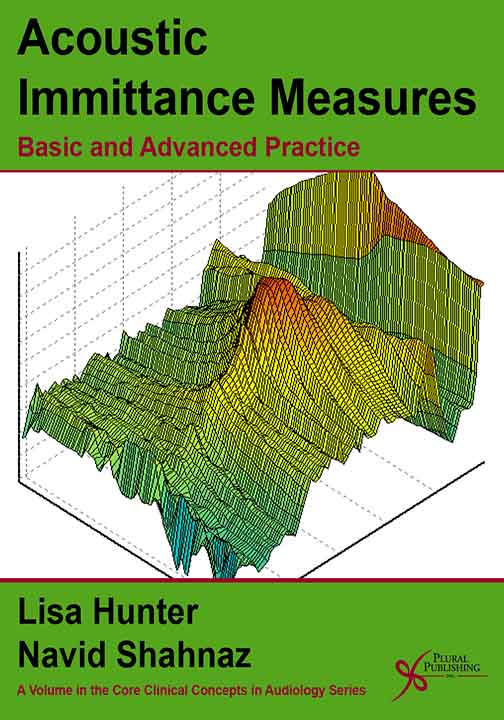
Acoustic Immittance Measures: Basic and Advanced Practice
First Edition
Lisa L. Hunter, Navid Shahnaz
Details: 175 pages, B&W, Softcover, 8.5" x 11"
ISBN13: 978-1-59756-437-3
© 2013 | Available
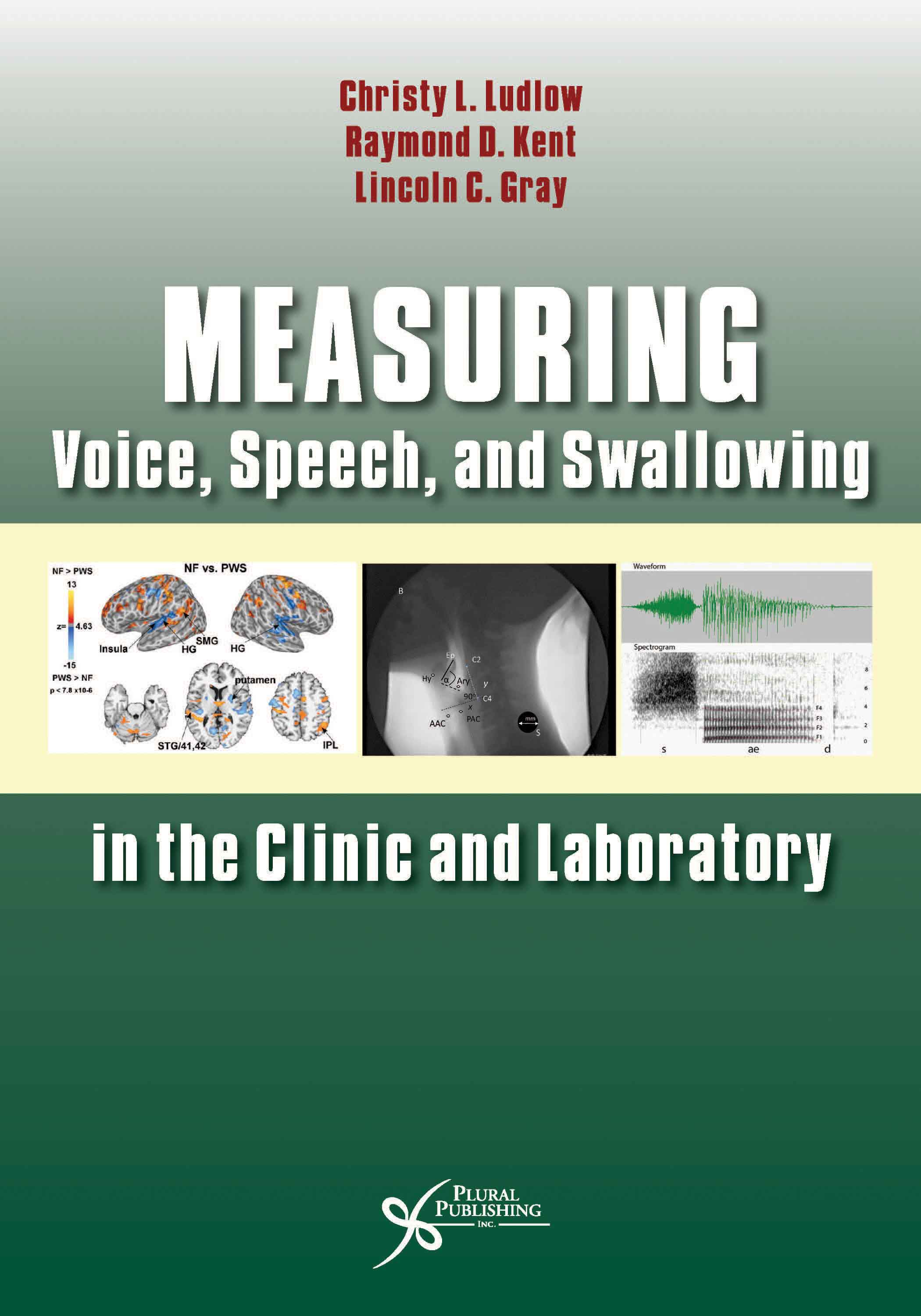
Measuring Voice, Speech, and Swallowing in the Clinic and Laboratory
First Edition
Christy L. Ludlow, Raymond D. Kent, Lincoln C. Gray
Details: 566 pages, Full Color, Spiral Bound, 7" x 10"
ISBN13: 978-1-59756-464-9
© 2018 | Available
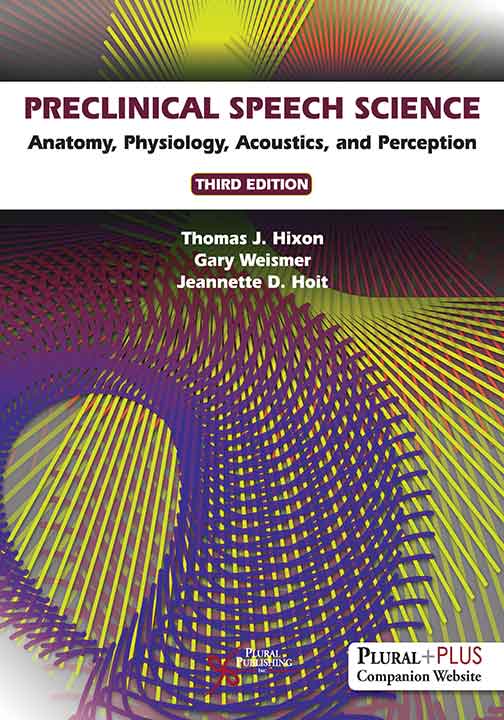
Preclinical Speech Science: Anatomy, Physiology, Acoustics, and Perception
Third Edition
Thomas J. Hixon, Gary Weismer, Jeannette D. Hoit
Details: 728 pages, Full Color, Hardcover, 8.5" x 11"
ISBN13: 978-1-63550-061-5
© 2020 | Available
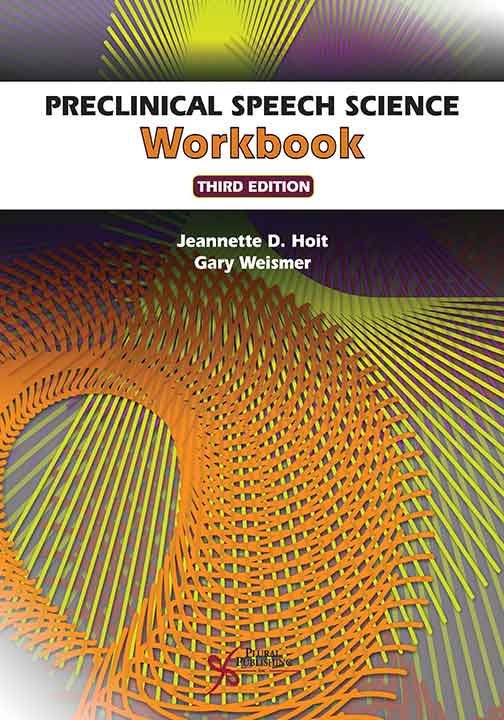
Preclinical Speech Science Workbook
Third Edition
Jeannette D. Hoit, Gary Weismer
Details: 436 pages, B&W, Spiral Bound, 8.5" x 11"
ISBN13: 978-1-63550-063-9
© 2020 | Available
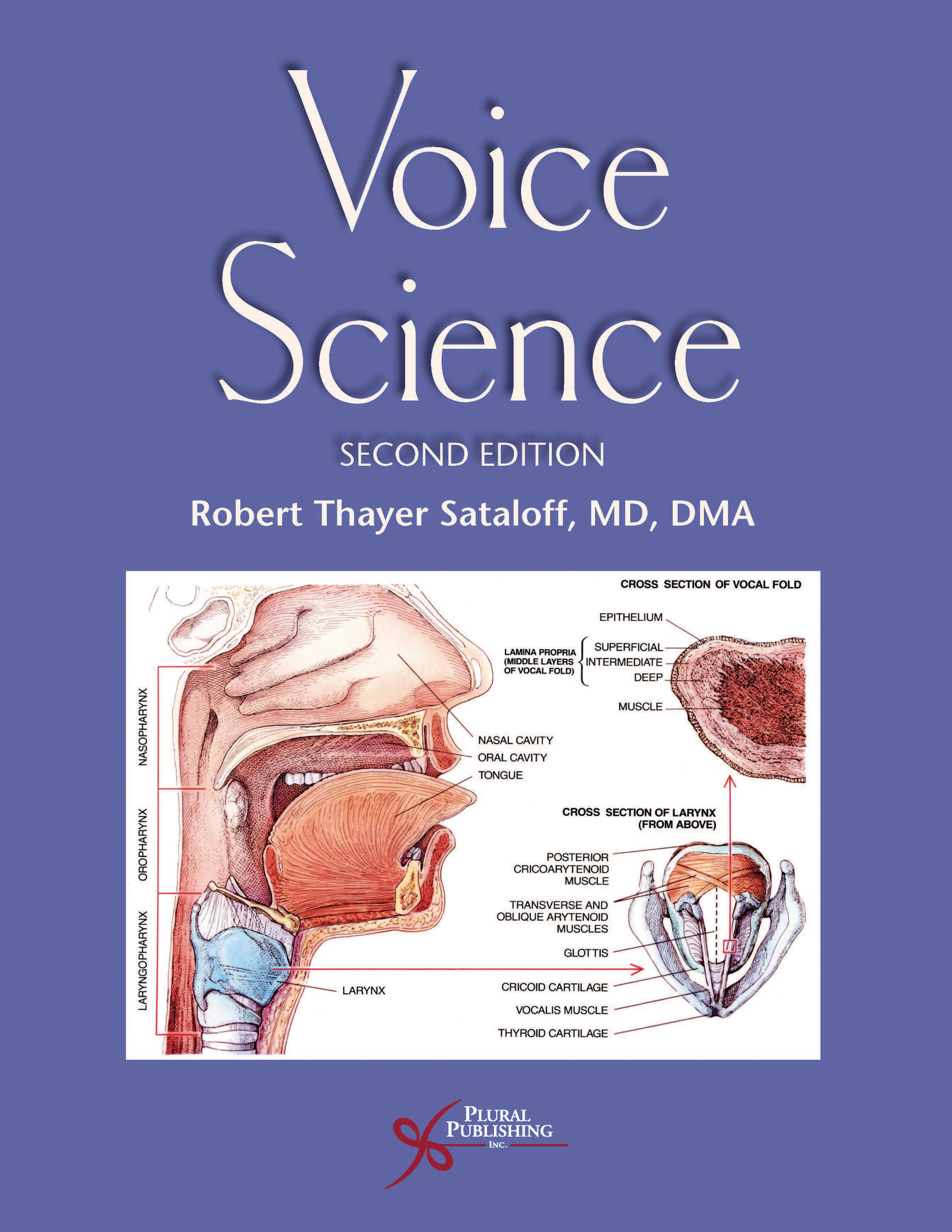
Voice Science
Second Edition
Robert T. Sataloff
Details: 347 pages, Full Color, Softcover, 8.5" x 11"
ISBN13: 978-1-59756-862-3
© 2017 | Available
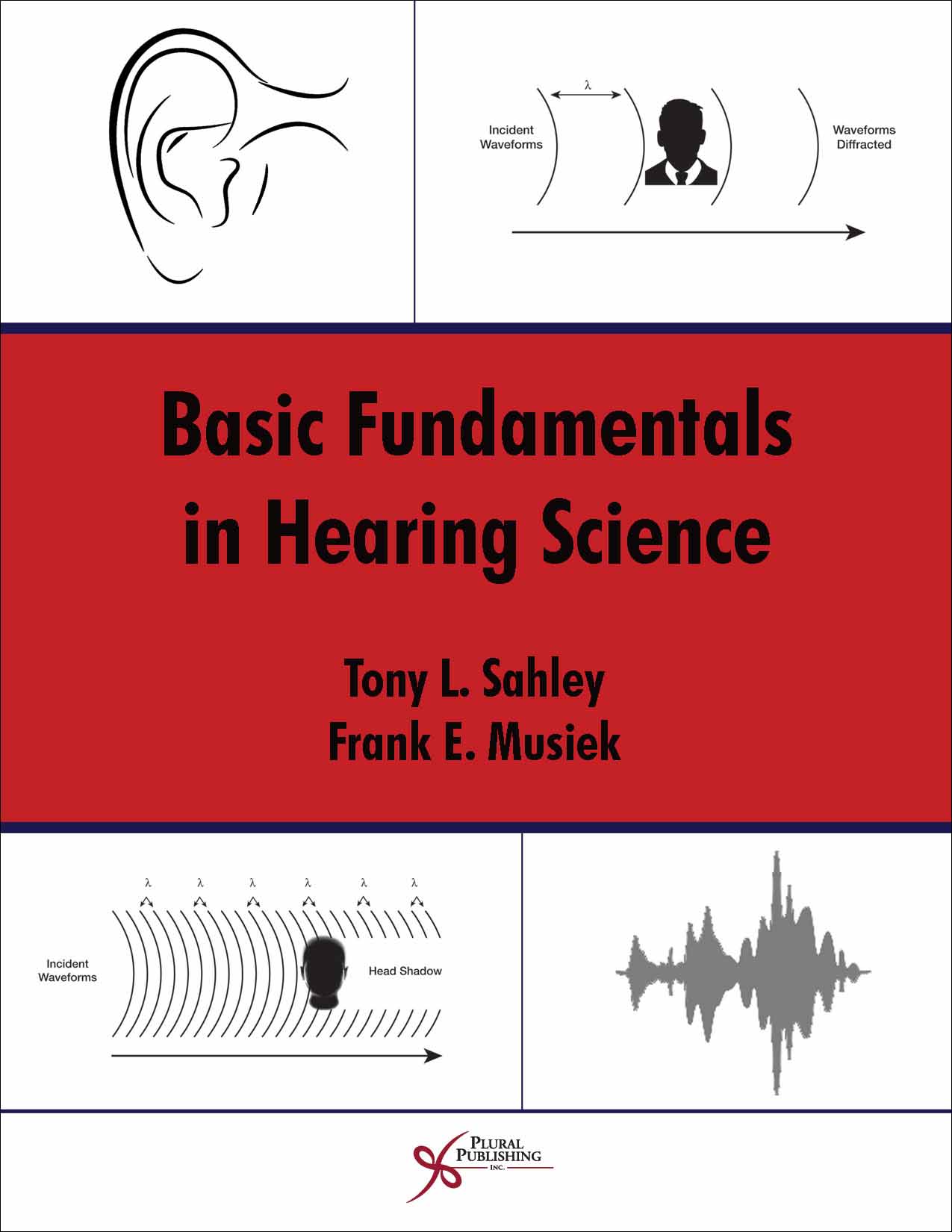
Basic Fundamentals in Hearing Science
First Edition
Tony L. Sahley, Frank E. Musiek
Details: 704 pages, B&W, Hardcover, 7" x 10"
ISBN13: 978-1-59756-549-3
© 2016 | Available
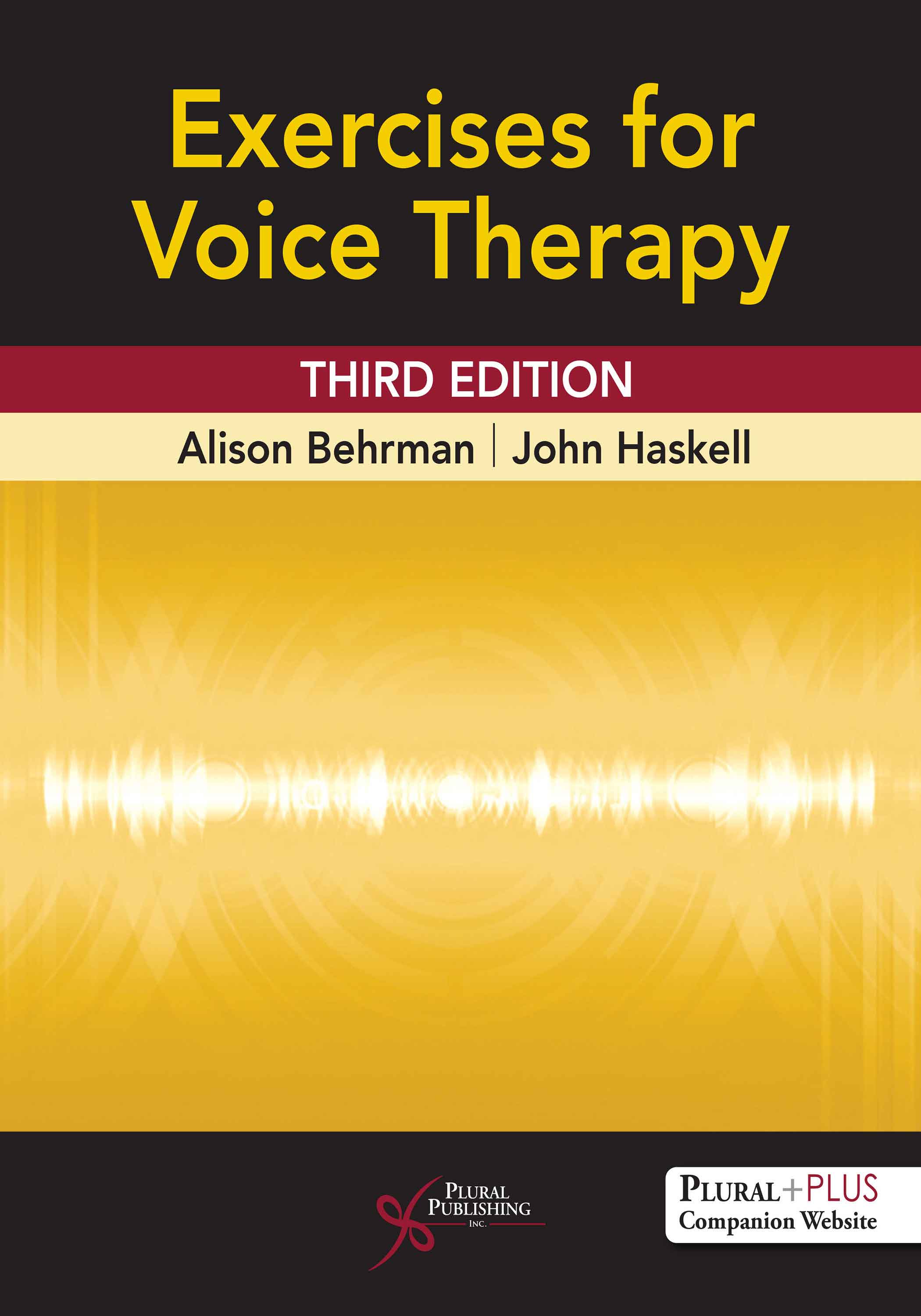
Exercises for Voice Therapy
Third Edition
Alison Behrman, John Haskell
Details: 289 pages, B&W, Softcover, 8.5" x 11"
ISBN13: 978-1-63550-183-4
© 2020 | Available
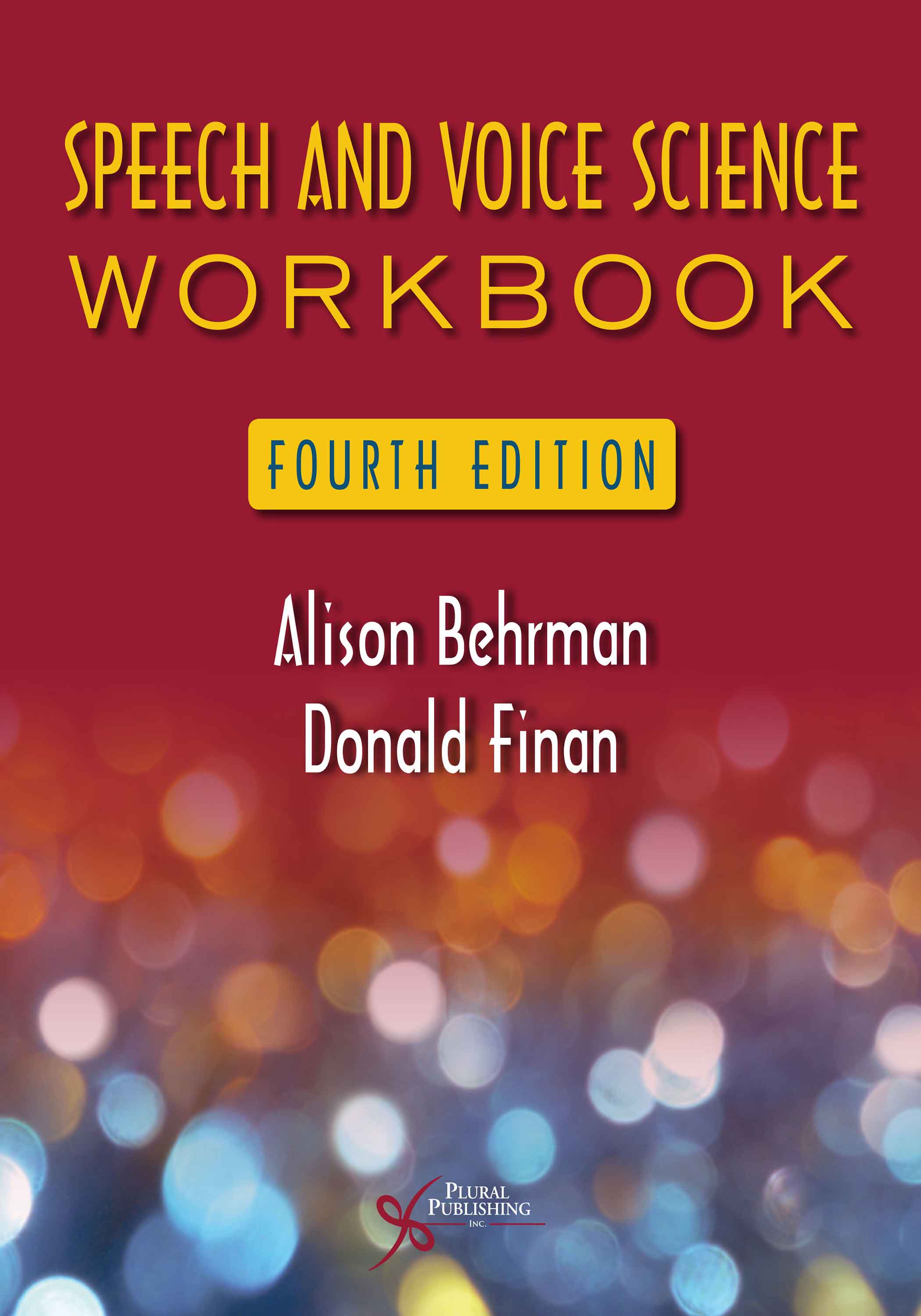
Speech and Voice Science Workbook
Fourth Edition
Alison Behrman, Donald Finan
Details: 351 pages, B&W, Spiral Bound, 8.5" x 11"
ISBN13: 978-1-63550-193-3
© 2023 | Available
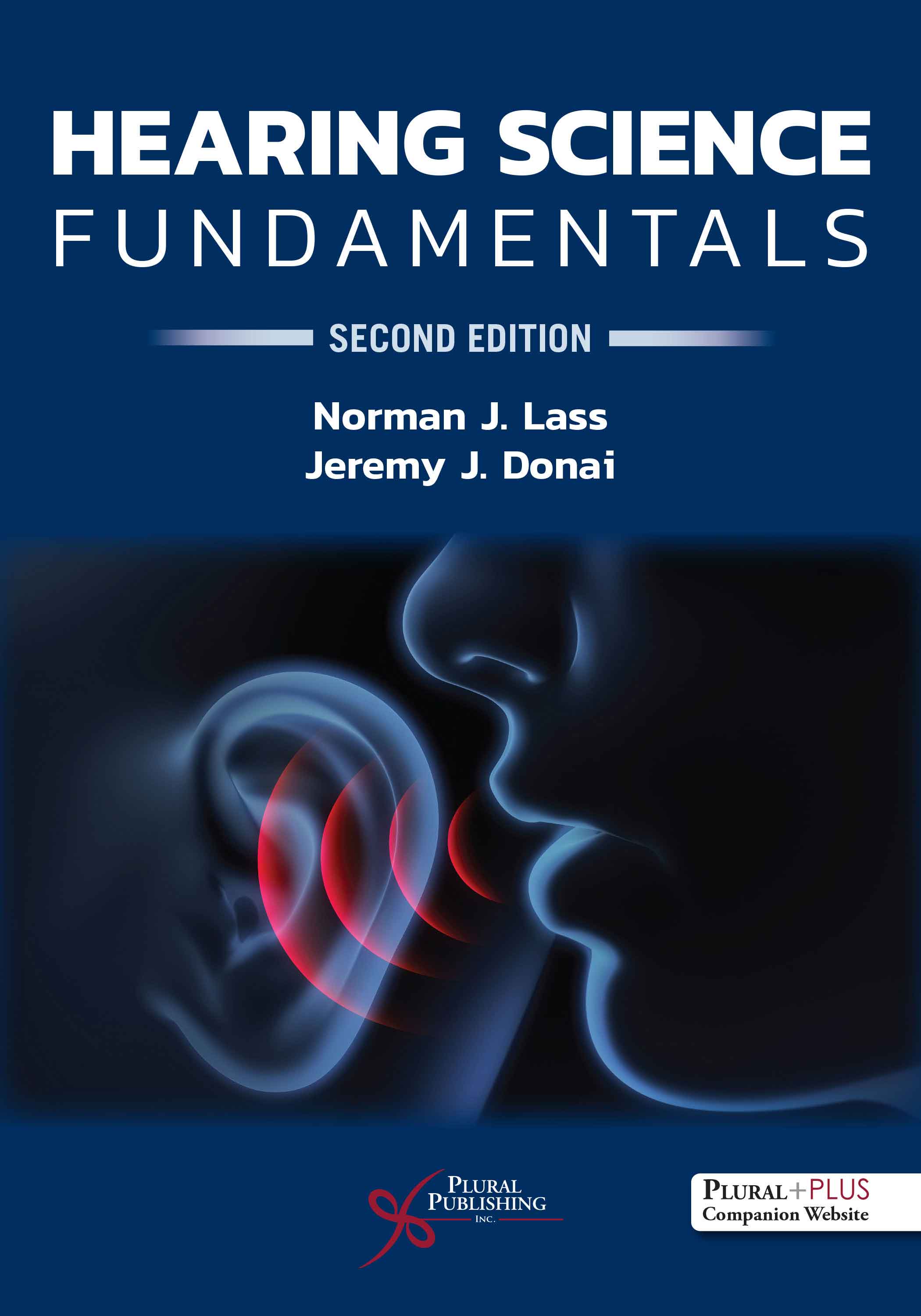
Hearing Science Fundamentals.
Second Edition
Norman J. Lass, Jeremy J. Donai
Details: 370 pages, 2-Color, Softcover, 7" x 10"
ISBN13: 978-1-63550-328-9
© 2023 | Available

